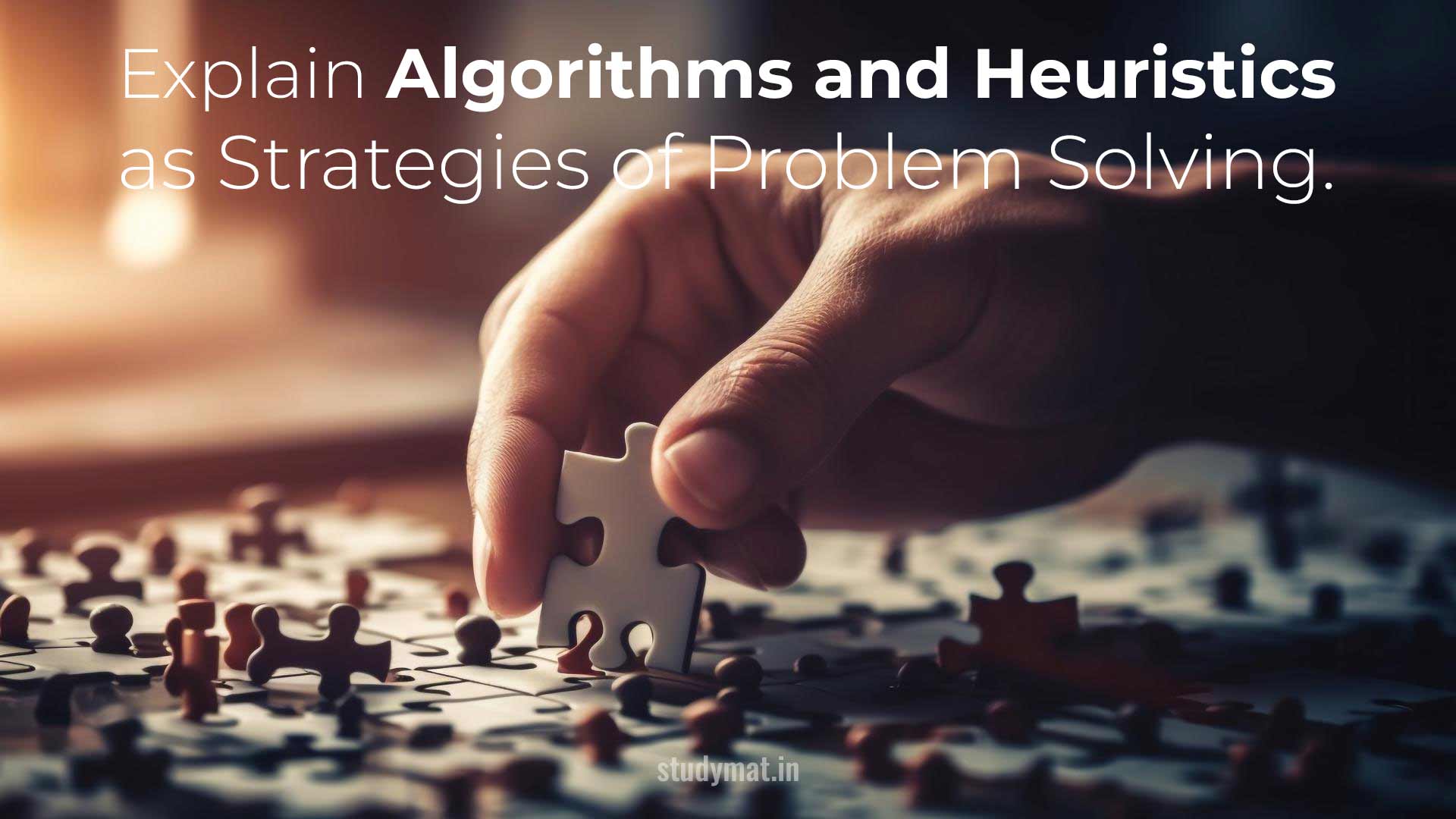In this article, we will Explain Algorithms and Heuristics as Strategies of Problem Solving.
Explain Algorithms and Heuristics as Strategies of Problem Solving.
Even with all the necessary knowledge and skills, success in problem-solving is not guaranteed.
In addition to knowledge and skills, problem-solving requires a general strategy.
A strategy is a series of steps used to solve a problem efficiently by extracting relevant data and providing a planned approach.
Cognitive psychologists identify two main types of strategies: algorithms and heuristics.
Algorithms:
An algorithm is a method that ensures solving a problem correctly by following well-defined rules. For instance, in an anagram problem, an algorithm would involve trying all possible letter sequences until finding the correct and meaningful word. There are four essential properties of an algorithm:
- Each step of an algorithm must be precise and unambiguous to eliminate any uncertainty.
- An algorithm must eventually stop or terminate its execution to provide a result.
- An algorithm must deliver the correct solution to the problem.
- An algorithm must apply to all instances of the problem it addresses.
While an algorithm guarantees a solution, its execution often demands significant time and effort, making it less practical for human operators to use frequently.
Heuristics:
Heuristics are general guidelines used for problem-solving but don’t guarantee correct solutions. They offer various approaches, and if one doesn’t work, another can be tried. General heuristics apply broadly, while specific ones are for specialized fields.
Means-End Analysis is a common heuristic that breaks a problem into smaller goals. Achieving these smaller goals moves closer to the main goal, aiding problem-solving.
Working Backward starts from the goal and goes back to the initial state. It’s useful for certain problems like mazes but requires a well-defined end state.
Analogies involve using past problem-solving experiences to tackle current ones. This strategy identifies similarities between past and present problems to find solutions.
FAQ:
- What are Heuristics as Strategies of Problem-Solving?
- What is the Difference between Algorithms and Heuristics as Problem-Solving Strategies?
- What is the Algorithm Problem-Solving Strategy?
- What Problems can be Solved by Algorithm and by Heuristics?
Follow Us:
If you like this article, you can Follow us on Facebook.
Also, you can Join our Official Facebook Group for QnA Sessions and Discussions with the worldwide IGNOU community


